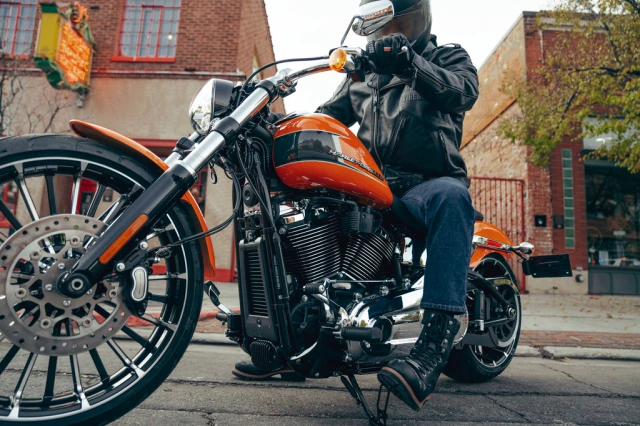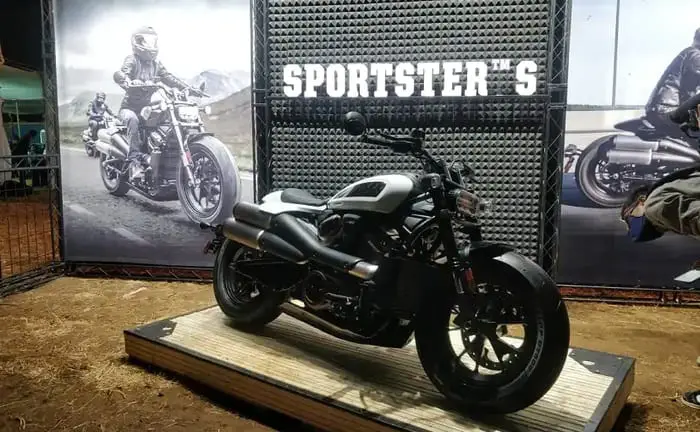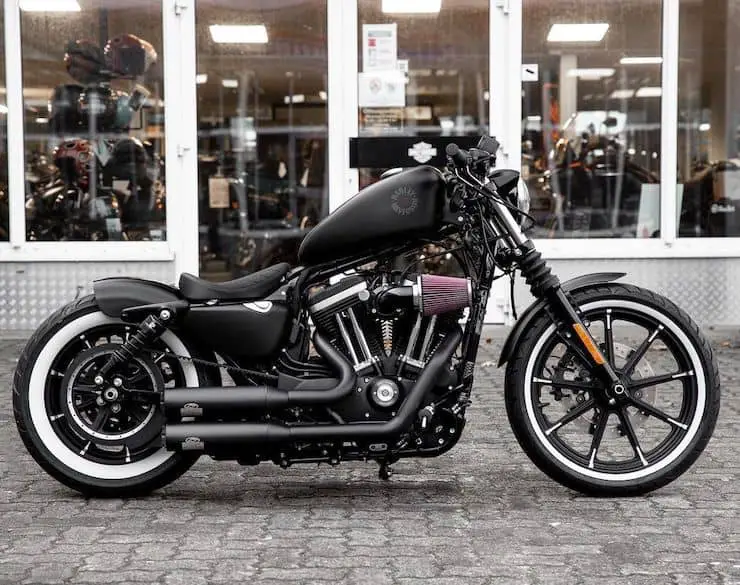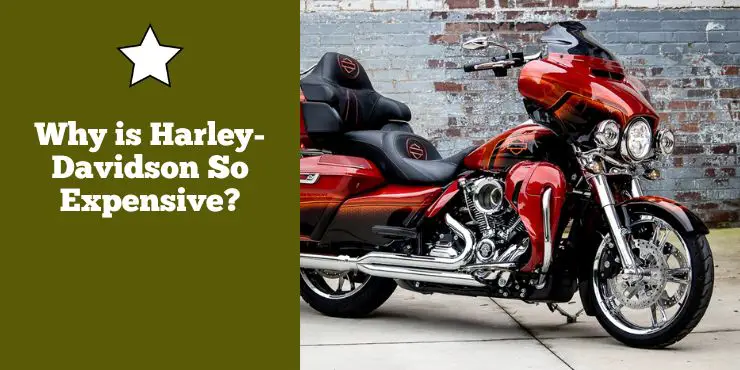Owning a Harley-Davidson motorcycle is a dream for many, but it comes with a hefty price tag. From the initial purchase price to regular maintenance, the cost of owning one of these iconic motorcycles can be eye-watering. But why is Harley-Davidson so expensive?
Harley-Davidson motorcycles are expensive due to their premium build quality, heritage, and American-made manufacturing. The brand emphasizes durable components, exclusive design, and a strong dealer network, adding to the perceived value.
In this article, we’ll explore the reasons why a Harley-Davidson can cost so much and what you can do to get the most out of your ride. So, if you’ve ever asked yourself why it costs so much to own a Harley-Davidson, you won’t want to miss this!
The history of the Harley-Davidson brand
Early years of Harley-Davidson
Harley-Davidson is an iconic American motorcycle brand that has been thrilling the masses and producing some of the most popular and beloved bikes for the last century. However, the company had a rather humble beginning, as it started from a small wooden shed in Milwaukee.
The company’s story started in the early 1900s, a time when motorcycles were still a new invention and there were a handful of companies that produced them. At the time, Harley-Davidson was just a concept in the minds of two boys from Milwaukee, Wisconsin. The company was started back in 1903 by William S. Harley and Arthur Davidson, who were still in their early 20s at the time.
The two boys started their work in a small wooden shed in Milwaukee, Wisconsin, where they built their first prototype. It was a small, single-cylinder bike with a wooden frame, and it was capable of reaching a top speed of 25 miles per hour. While the prototype was rather crude by modern standards, it was still an important step in the development of what would eventually become the Harley-Davidson bike.
Over the next few years, Harley-Davidson continued refining and improving its bikes, introducing numerous innovations to set its bikes apart from the competition. In 1906, the company debuted its first V-twin engine, which was capable of producing more power and smoother performance compared to single-cylinder engines. This innovation helped establish Harley-Davidson as the leader in the industry, while also setting the stage for the company’s future success.

By 1908, Harley-Davidson was already producing over 450 bikes per year after having established a reputation for manufacturing high-quality, reliable bikes. The Harley bikes were quite popular among casual bikers and serious racers. Over the next few decades, the company continued innovating and improving its bikes, introducing new models, new engines, and revolutionary features. During WWI, Harley-Davidson supplied the US military with thousands of bikes. This helped the brand establish itself as a patriotic symbol, further cementing its place in American culture.
Expansion and popularization post WWII
The period following WWII was a time of expansion and popularization for Harley-Davidson. After the war, the brand shifted its focus from military production to the consumer market, and the demand for Harley-Davidson bikes skyrocketed.
One of the primary factors that drive the expansion of the Harley-Davidson brand in the post-war era was the rise of the American middle class. As more and more Americans started achieving economic prosperity, they started looking for ways to enjoy their newfound wealth and leisure time. Motorcycles, especially Harley-Davidson motorcycles, ended up becoming a popular symbol of freedom and individualism. Within no time, the demand for these bikes skyrocketed.
Harley responded to this demand by introducing a wide range of new models and features designed to appeal to a broad cross-section of riders. In the late 40s and early 50s, the company debuted the Hydra-Glide, which came with a telescopic front fork and a hydraulic rear suspension, which provided a smoother ride than previous models. The bike ended up being an instant success and helped establish Harley-Davidson as the dominant motorcycle manufacturer in the United States.
During this period, Harley-Davidson also became closely associated with the biker culture, thanks in large part to the incredible popularity of the outlaw bike subculture. While most riders were law-abiding citizens who enjoyed the freedom and thrill of riding a Harley, outlaw biker gangs like the Hells Angels became notorious for criminal activities and their wild behavior. Their association with outlaw biker culture only increased the mystique and allure of Harley-Davidson bikes, while further helping cement the company’s place in American popular culture.
In the 60s and 70s, Harley-Davidson faced major competition from foreign motorcycle manufacturers, particularly from Japan. While new competitors offered faster, lighter, and more technologically advanced bikes, there were unable to match the raw power and personality of Harley-Davidson bikes. The company responded to this challenge by continuing to innovate and improve its products, introducing new bikes and features designed to appeal to a new generation of bikers.
In the 80s and 90s, Harley-Davidson continued expanding and diversifying its product line. The company introduced a wide range of new models in various styles that were designed to appeal to different types of riders. Further, Harley also became increasingly involved in philanthropy and community outreach, sponsoring charitable events, and supporting the causes that were important to its customers.
Modernization and expansion recent years
Lately, Harley-Davidson has undergone a major transformation, both in terms of modernization and expansion. The company was founded 120 years ago, and it has been synonymous with the American culture and the open road. However, as consumer preferences and technologies have evolved, the iconic brand has had to adapt to remain relevant in an increasingly competitive market.
One of the key ways in which the brand has modernized its product line lately is by incorporating new technologies and features in its bikes. For instance, Harley-Davidson has introduced a wide range of digital enhancements to its bikes, such as GPS navigation, touchscreen displays, Bluetooth connectivity, modern braking systems, and more. These modern features are designed to appeal to the younger riders who have grown up in a digital age and expect the latest technologies and features in their bikes.
Harley-Davidson has also made significant investments in electronic motorcycle technology. In 2019, the brand launched its first electronic bike, the LiveWire, which was designed for providing a zero-emissions riding experience without having to sacrifice the power and performance that the brand is known for. Since then, the company has continued investing in electronic motorcycle technology and has plans to release new models in the coming years.
Another area in which the company has expanded lately is through its global footprint. The brand has always been a global brand but lately, it has made a special effort to expand its presence in key international markets. This has involved opening up new dealerships, launching localized marketing campaigns, and developing new products designed specifically for international consumers.

In addition to expanding its global footprint, the brand has also diversified its product line to appeal to a wider range of bikers. Harley has also introduced new models and styles like the Street and Sportster lines, which are designed to appeal to younger and more urban riders. These new models are much more affordable and easier to handle than some of the traditional models, making them accessible to a wider range of consumers.
Lastly, Harley-Davidson has made significant efforts for engaging with its customers and build a stronger community around its brand. The company also sponsors a wide range of events and activities, like the annual Sturgis Motorcycle Rally. This event attracts thousands of bikers from all over the world each year. Harley has also launched a wide range of online tools and resources, such as the Harley Owners Group (HOG) community. Such groups allow the riders to connect and share their experiences with other like-minded Harley-Davidson enthusiasts.
Why is Harley-Davidson so expensive?
#1. Unique design of Harley-Davidson bikes
When it comes to the cost of Harley-Davidson motorcycles, the role of engine design, look and feel, and high-quality parts cannot be overstated. They’re all key contributors when it comes to the cost of Harley-Davidson motorcycles, and they’re also what sets the brand apart from other motorcycle manufacturers.
One of the most significant factors in the cost of Harley-Davidson bikes is the engine design. Harley-Davidson engines are air-cooled and typically come with a V-twin configuration, which is what offers them a unique sound and feel. The design of the engine is what makes Harley-Davidson bikes so distinctive, and it is also what contributes to the high cost of these bikes. The engine design is an important part of the motorcycle and requires significant investment in research and development to create engines that are unique, powerful, and reliable.
Another key factor responsible for the high cost of Harley-Davidson bikes is the look and feel of the bikes. Harley-Davidson is a brand known for its iconic design, which features a heavy and muscular look with a low-slung profile. Harleys are designed to be powerful and comfortable, while they also feature extensive customization options. The design and customization options of Harley-Davidson bikes require a significant investment in terms of materials and labor, which also contributes to the cost of these bikes.
Harley-Davidson bikes are also known for their high-quality parts. The company makes use of premium materials and components to create motorcycles that are both durable and reliable. This commitment to high-quality parts and components is what sets the brand apart from other motorcycle manufacturers. Further, it is also a critical factor in the high cost of these bikes. The use of premium, high-quality parts is important as it ensures that Harley-Davidson bikes are both safe and reliable, and this needs significant investment in research and development.
#2. Cost of production
Harley-Davidson is a brand that is synonymous with premium, high-quality bikes that are built to last. The labor cost, materials cost, quality control, and research and development are among the key factors that are responsible for the high production cost of these bikes.
One of the biggest components of the cost of production for any motorcycle, especially Harley-Davidson bikes, is labor cost. Harley-Davidson employs a skilled workforce that is dedicated to producing some of the highest-quality motorcycles possible. From the assembly line workers to the engineers responsible for designing the bikes, every member of the Harley-Davidson team plays a significant part in the production process. As with any high-quality product, the cost of labor will be a significant component in terms of the total cost of production for Harley-Davidson bikes.
Another major component of the high cost of production for Harley-Davidson bikes is the cost of materials. The company makes use of high-quality materials when it comes to the construction of its bikes, such as steel, aluminum, and leather. These materials are selected carefully for their durability and increased strength, which ensures that each motorcycle can withstand the rigors of the road for years to come. Of course, the cost of these materials will be significant, which makes it a key factor in the overall cost of production for Harley-Davidson bikes.
Maintaining the highest standards of quality is always the top priority for Harley-Davidson. This is reflected perfectly in the brand’s rigorous quality control processes. From the initial design phase right down to the final assembly, every step of the production process is monitored carefully to make sure that each bike meets the brand’s high standards. This attention to detail and high quality is reflected in the final cost of production in terms of Harley-Davidson bikes, as the brand is committed to using only the highest-quality parts and materials.
Research and development is another major factor that contributes to the cost of production for Harley-Davidson bikes. The brand invests heavily when it comes to the development of new technologies and design elements that help in setting its bikes apart from the competitors. The brand’s commitment to innovation and improvement is reflected in the final cost of production for each bike, as research and development costs can be quite significant.
#3. Consumer demand
Harley-Davidson is a legendary brand that has been around for more than a century and has become one of the most recognizable and iconic motorcycle brands in the world. One of the key factors that set the company apart from other motorcycle manufacturers is the company’s loyal fan base, who are known for their devotion to the company. Alongside brand loyalty and brand image, the limited production and availability of Harley-Davidson bikes also play a role in the unique appeal and high cost of these bikes.
Harley-Davidson has a rabid fan base that is incredibly loyal and committed to the brand. Further, these people are also willing to repeatedly purchase products from the company. Harley-Davidson is one of the most iconic brands in the world, and its loyal fan base is a testament to the brand’s commitment to quality and innovation. Brand loyalty is a powerful force that drives sales while also helping the company maintain its pricing power. Harley-Davidson has a reputation for producing high-quality bikes that are durable and reliable. This reputation has been built over many years, and it has helped the company create a loyal following of customers who are more than willing to pay a premium for these bikes.
Harley-Davidson is known for its tough, rugged, and rebellious image that it has been cultivating over decades of marketing and branding efforts. The brand’s advertising campaigns often feature images of bikers on the open road, evoking a strong sense of freedom and adventure. The brand image has helped Harley create a strong emotional connection between the brand and its customers, while also contributing to the loyalty of Harley-Davidson bikers. The company has a strong brand image that is commonly associated with America, freedom, and individuality. These bikes are often seen as a symbol of rebellion and non-conformity. This image has helped in creating a premium perception of the brand, while also allowing Harley-Davidson to charge higher prices for its motorcycles.

Harley-Davidson produces a limited number of bikes every year. This limited production helps in creating exclusivity around the brand and its products. Customers who are open to paying a premium for Harley-Davidson motorcycles are often willing to do so because they wish to own a unique and exclusive product. Limited production also helps in maintaining the value of Harley-Davidson motorcycles over time.
Harley-Davidson motorcycles are not available in every market. The company controls its distribution channels carefully to make sure that its bikes are only sold in select markets. The limited availability of these bikes helps in creating scarcity around the brand and its products, which allows the company to charge a premium as the customers are willing to pay such prices. Customers who are willing to pay a big fee for Harley-Davidson bikes are usually willing to do so as they want to own a product that isn’t readily available.
#4. Pricing strategies
Harley-Davidson has released some of the most iconic and costliest bikes in the market, but they’re well worth the price. Some of the factors that result in the bikes having such high costs involve the brand’s approach to price segmentation, market positioning, and limited edition models released by the brand.
Price segmentation refers to the practice of dividing customers into different groups based on the customers’ willingness to pay for products. Harley-Davidson is known for its premium pricing strategy, and the company utilizes price segmentation for targeting different segments of the market. For instance, the brand’s entry-level motorcycles are priced lower than its higher-end models, which are geared toward more experienced riders and priced accordingly. This approach allows the company to offer products at a high price range, which makes the brand accessible to a broader range of customers.
Marketing positioning is the way the company positions its products or services in the marketplace. Harley-Davidson has a unique market position, as the company is synonymous with the biker culture and lifestyle. Harley’s marketing efforts are focused on creating a sense of community and camaraderie around the brand, which appeals to Harley-Davidson bikers. This position allows the company to charge a premium for its products, as customers are open to paying more for a product that is associated with a particular lifestyle and culture.
Harley-Davidson produces a limited number of edition models every year, and they are highly sought after by Harley-Davidson enthusiasts and collectors. These limited edition models have been designed to be unique and exclusive, while also featuring custom paint jobs and other unique features. The limited production of these models creates a sense of exclusivity and rarity among these bikes, which appeals to collectors and enthusiasts. This exclusivity allows the company to charge a high fee for these models, which people are more than willing to pay.
FAQs
What makes Harley-Davidson motorcycles so expensive?
Harley-Davidson motorcycles are known for their classic design and quality craftsmanship, which makes them more expensive than other bikes. Harley-Davidson also uses high-quality materials in their bikes, such as chrome and heavy-gauge steel, which can add to the cost. Additionally, Harley-Davidson bikes are hand-made, which adds to the cost due to the labor involved in building each bike.
What other factors contribute to the cost of a Harley-Davidson motorcycle?
The cost of a Harley-Davidson motorcycle is also determined by the model, features, and accessories included. Higher-end models and features, such as special paint, custom parts, and performance upgrades, can add to the cost. Additionally, the cost of the bike can be affected by demand, availability of parts, and other factors.
What are the benefits of owning a Harley-Davidson motorcycle?
The benefits of owning a Harley-Davidson motorcycle include classic style, quality craftsmanship, and an iconic design. Additionally, Harley-Davidson bikes are known for their reliability and performance. The classic design and quality craftsmanship make Harley-Davidson motorcycles a unique and sought-after choice.

